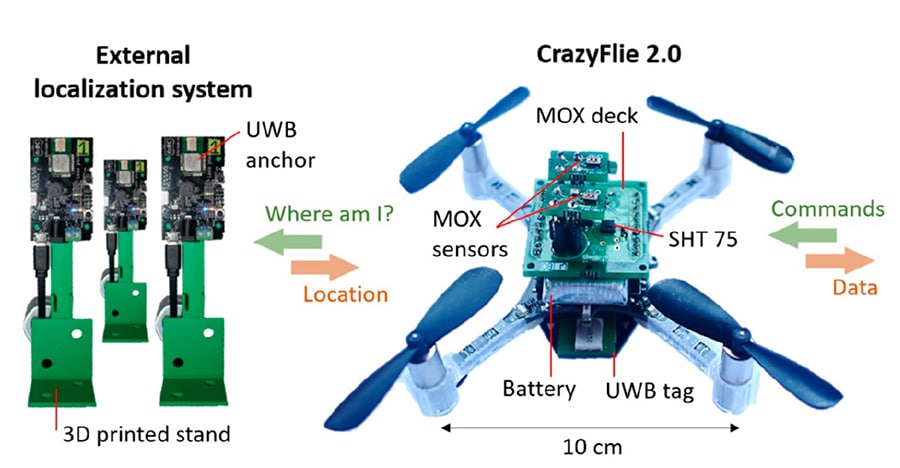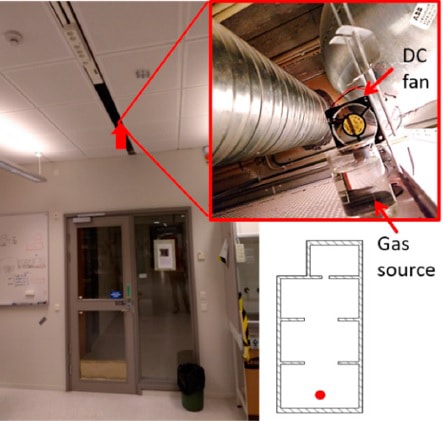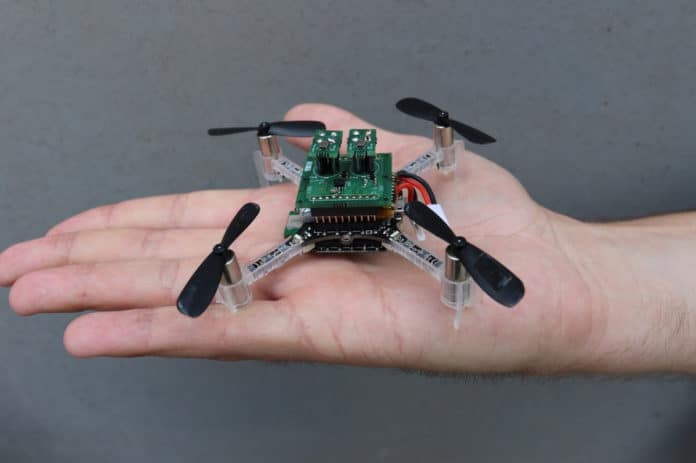In some disastrous places such as the sites where buildings are collapsed due to earthquakes or explosions, toxic gas leaks can pose a real risk to rescue teams. Also, it is never easy to identify the presence of victims in places which are hard to access.
To address this, the researchers from the University of Barcelona and the Institute for Bioengineering of Catalonia (IBEC) have designed a compact and lightweight nano-drone known as ‘SNAV’ (Smelling Nano Aerial Vehicle). The drone weighs just 35-grams and is specially designed to fly and identify gases in different scenarios to which other technological gadgets cannot access.
The SNAV nano-drone is equipped with nanometric MOX (metal-oxide) gas sensors that can detect even a minute concentration of gases such as carbon monoxide (CO) or methane (CH4) and other organic volatile compounds like ethanol, acetone, benzene, etc. It has a sensitivity of down to part per million in volume (ppmv), which depends on the gas and the used sensor. The drone can locate the source of an emitted gas by tracking how concentrated that gas is within different parts of a room.

Additionally, the quadcopter can cross holes and cracks and is able to work in large areas (about 160 square meters).
“This new device would be especially useful in rescue operations in collapsed buildings due to earthquakes and explosions –SNAV can detect toxic gases and even the compounds unconscious victims inhale- and in a search for drugs or explosives in places which are hard to enter,” notes Santiago Marco, principal researcher at IBEC, who led the new research study.
The control mechanism of drones that fly large distances in open places is normally based on the GPS navigation system, which can’t track their satellites when indoors. The SNAV instead autonomously navigates within a building using a series of pre-installed radio-frequency transceivers.

“The new nano-drone has accelerometers and gyroscopes that help navigation but without the expected precision for its localization. Therefore, this function is based on a series of six radiofrequency transceivers -located in known positions- and a transceiver put in the same drone. This system allows us to fly the nano-drone to the position we want,” notes the researcher Javier Burgués (UB-IBEC).
In the future, researchers are planning to create bio-inspired navigation algorithms to be based, for instance, on the behavior of insects such as the mosquito or the moth.
“Another line we want to work on is the merge of data from multiple gas sensors to increase selectivity towards certain compounds of interest. In this case, researchers would work on experiments in complex scenarios and with chemical interferences”, conclude the experts Santiago Marco and Javier Burgués.
The research was recently published in the journal Sensors.
